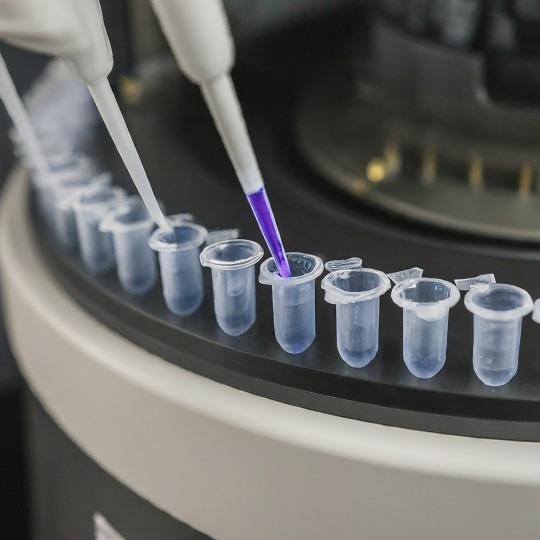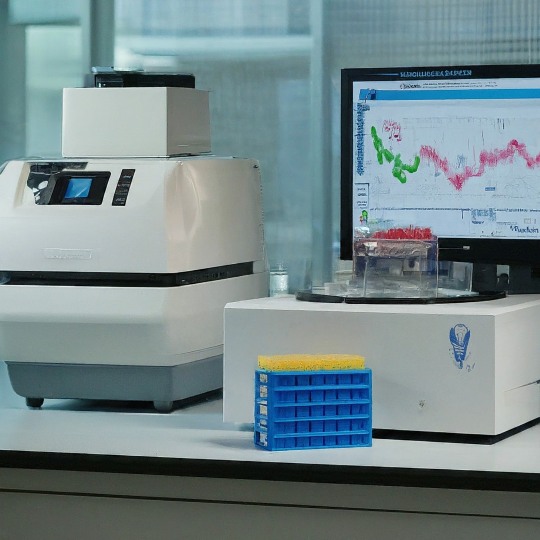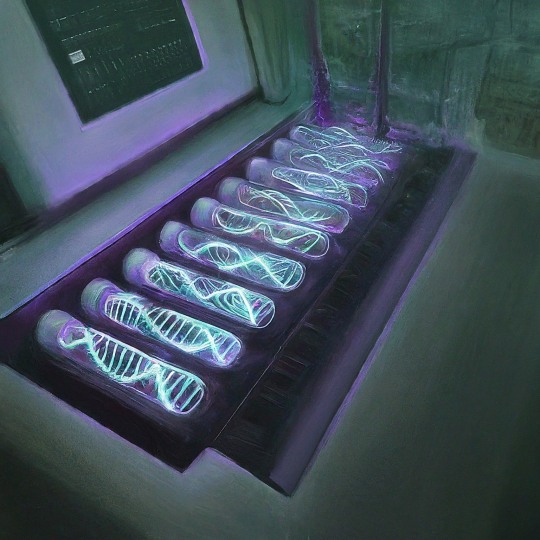#DNA polymerase
Explore tagged Tumblr posts
Text
Completing the Lagging Strand [Diagram]

Patreon
#studyblr#notes#genetics#genetics notes#biology#bio#biology notes#bio notes#microbiology#microbio#laboratory science#lab science#science#scienceblr#sciblr#dna#ligase#dna ligase#dntps#atp#amp#dna polymerase#dna repair#lagging strand dna#dna lagging strand#genes#rna#primer rna
7 notes
·
View notes
Text

TSRNOSS. Page 302.
#jellyfish#storm detection#ommatidia#evolution#infrasound#propeller thrust#cold water#ascorbic acid catalysis#radioisotopes#capillarity#abortion#hair spring#alcohol#elasmobranch ancestry#tumours#glycolysis#oligotrophic waters#cichlid speciation#DNA polymerase#coral#error rate#theoretical biology#cursive handwriting#manuscripts
3 notes
·
View notes
Text
Brain cancer "going APE": here is its way to resist TMZ and leave DNA repair BEReft of options
In spite of intensive research, glioblastoma remains one of the most lethal types of brain cancer. Despite there are several available medications, temozolomide (TMZ) is the front-line drug in its treatment; while TMZ effectively penetrates the brain and targets tumors, its success depends on the tumor cells attempting to repair the DNA damage caused by the drug. Unfortunately, glioblastomas…
#APE-1#base excision repair#brain cancer#cancer cells#cellular aging#DNA polymerase#DNA repair#glioblastoma#temozolomide
2 notes
·
View notes
Text
Your brain has DNA polymerase in it. This is because it’s needed to polymerase the DNA that’s also in there isn’t that cool?
1 note
·
View note
Text
i love microbiology. my microorganisms
10 notes
·
View notes
Text
hear me out cake for a molecular biologist would have DNA polymerase from Thermus aquaticus on there
#zone posting#taq DNA polymerase#sorry i actually have FOUR midterms not three in one week and im losing it a little
9 notes
·
View notes
Text
sometimes when im stressed i find those unfinished complementary base chart things and I fill them out until all is well again. It a very effective strategy
9 notes
·
View notes
Text



Amplifying Revolution: The Polymerase Chain Reaction (PCR)
Imagine a scenario where you have a crucial document, but there's only one fragile copy. You need numerous duplicates to analyze and share. This is exactly the challenge faced by scientists dealing with DNA. Thankfully, a revolutionary technique called Polymerase Chain Reaction (PCR) comes to the rescue. PCR, often referred to as molecular photocopying, is a fundamental tool in molecular biology. It allows scientists to exponentially amplify a specific DNA segment, creating millions of copies from a minuscule sample. This has revolutionized various fields, from diagnosing diseases to unraveling genetic mysteries.
The credit for inventing PCR is widely attributed to Kary Mullis, a biochemist working at Cetus Corporation in the early 1980s. Inspired by his nighttime drives through California, Mullis envisioned a method for exponentially copying DNA segments through repeated cycles of heating, annealing (primer attachment), and extension (polymerase-mediated DNA synthesis). This elegant concept became the foundation of PCR. Mullis's concept was brilliant, but a crucial hurdle remained. The process required a DNA polymerase enzyme that could withstand repeated heating and cooling cycles. The solution came from an unexpected source: hot springs. In 1976, researchers discovered Taq polymerase, a heat-stable enzyme isolated from the thermophilic bacterium Thermus aquaticus. This discovery was a game-changer, as Taq polymerase could function optimally during the high-temperature steps of PCR. In recognition of its transformative impact on science, Kary Mullis was awarded the Nobel Prize in Chemistry in 1993, alongside Michael Smith, who pioneered site-directed mutagenesis.
While the core concept of PCR was established, the technique required further refinement. Pioneering researchers like Henry Erlich at Cetus played a vital role in optimizing reaction conditions, automating the process, and developing the now-ubiquitous thermal cyclers that precisely control the temperature changes needed for PCR. The 1980s and 1990s witnessed a surge in PCR applications. In 1985, PCR was used for the first time to analyze sickle cell anemia, demonstrating its potential for clinical diagnostics. Forensic science embraced PCR in 1987, with the successful amplification of DNA from a single human hair. By 1989, highly sensitive DNA fingerprinting techniques based on PCR became a game-changer in criminal investigations.
At the heart of PCR lies a clever exploitation of the natural process of DNA replication. The key players in this drama are:
Template DNA: The DNA sequence that contains the target region to be amplified
Primers: Short sequences of nucleotides that flank the target DNA region and serve as starting points for DNA synthesis.
DNA Polymerase: Enzyme responsible for synthesizing new DNA strands by extending the primers using nucleotides.
Nucleotides: The building blocks of DNA, including adenine (A), thymine (T), cytosine (C), and guanine (G).
Buffer Solution: Provides optimal conditions for the enzymatic reactions to occur.
Thermal Cycler: Instrumentation used to automate the PCR process by cycling through different temperatures.
At its core, PCR mimics the natural process of DNA replication within an organism. However, PCR condenses this complex process into a series of controlled steps carried out within a test tube. Here's a breakdown of the PCR cycle:
Denaturation: The first step involves heating the reaction mixture to a high temperature (usually around 95°C), causing the double-stranded DNA to separate into two single strands. This process is known as denaturation.
Annealing: The temperature is then lowered to allow the primers to bind (anneal) to their complementary sequences on the single-stranded DNA. This typically occurs around 50-65°C, depending on the primer sequences.
Extension: With the primers bound, the temperature is raised again, and DNA polymerase synthesizes new DNA strands by extending from the primers using the nucleotides present in the reaction mixture. This step occurs at a temperature optimal for the DNA polymerase enzyme, typically around 72°C.
Cycle Repetition: These three steps—denaturation, annealing, and extension—are repeated multiple times (usually 20-40 cycles), resulting in an exponential increase in the number of DNA copies. Each cycle doubles the amount of DNA, leading to millions of copies of the target sequence after just a few cycles.
The beauty of PCR lies in its repetitive nature. With each cycle, the number of copies of the target DNA segment doubles. After 30 cycles, for example, you can have billions of copies of the specific DNA region, enough for further analysis.
This versatile technique has spawned numerous variations, each tailored for a specific purpose. Let's delve into some of the most common types of PCR:
Real-Time PCR (qPCR): Real-Time PCR, or quantitative PCR (qPCR), revolutionized nucleic acid quantification by enabling the real-time monitoring of DNA amplification. This technique utilizes fluorescent reporter molecules to measure the accumulation of PCR products during each cycle. qPCR is invaluable in gene expression analysis, microbial quantification, and diagnostic assays due to its high sensitivity and quantitative capabilities.
Reverse Transcription PCR (RT-PCR): Reverse Transcription PCR combines PCR with reverse transcription to amplify RNA sequences. This technique converts RNA into complementary DNA (cDNA) using reverse transcriptase enzyme before proceeding with PCR amplification. RT-PCR is pivotal in gene expression studies, viral load quantification, and the detection of RNA viruses such as HIV and SARS-CoV-2.
Nested PCR: Nested PCR involves two rounds of amplification, with the second round using a set of nested primers that bind within the product of the first round. This nested approach increases specificity and reduces nonspecific amplification, making it ideal for detecting low-abundance targets and minimizing contamination. Nested PCR is commonly used in forensic analysis, pathogen detection, and rare allele identification.
Multiplex PCR: Multiplex PCR allows simultaneous amplification of multiple target sequences within a single reaction. This technique employs multiple primer sets, each specific to a distinct target region, enabling the detection of multiple targets in a single assay. Multiplex PCR is valuable in microbial typing, genetic screening, and detection of pathogens with complex genetic profiles.
Digital PCR (dPCR): Digital PCR partitions the PCR reaction into thousands of individual micro-reactions, each containing a single DNA template molecule or none at all. By counting the number of positive and negative partitions, dPCR accurately quantifies target DNA molecules without the need for standard curves or reference samples. This technique is useful for absolute quantification of rare targets, allelic discrimination, and copy number variation analysis.
Allele-Specific PCR: Allele-Specific PCR selectively amplifies alleles containing specific nucleotide variations, enabling the detection of single nucleotide polymorphisms (SNPs) or mutations. This technique utilizes primers designed to match the target sequence with single-base mismatches at their 3' end, allowing discrimination between different alleles. Allele-Specific PCR finds applications in genetic testing, pharmacogenomics, and population studies.
PCR's ability to amplify DNA has made it an indispensable tool in various fields. Here are a few examples of its diverse applications:
Disease Diagnosis and Surveillance: PCR plays a pivotal role in the rapid and accurate diagnosis of infectious diseases. By amplifying specific nucleic acid sequences, PCR enables the detection of pathogens with high sensitivity and specificity. PCR-based tests have become indispensable in diagnosing viral infections such as HIV, hepatitis, influenza, and COVID-19. Additionally, PCR facilitates the surveillance of disease outbreaks and the monitoring of antimicrobial resistance.
Genetic Testing and Personalized Medicine: PCR empowers genetic testing by enabling the detection of genetic mutations, polymorphisms, and variations associated with inherited diseases, cancer, and pharmacogenomics. Through techniques like allele-specific PCR and real-time PCR, researchers can identify disease-causing mutations, assess drug efficacy, and tailor treatments to individual patients. PCR-based genetic tests have transformed healthcare by enabling early disease detection, risk assessment, and personalized therapeutic interventions.
Forensic Analysis and DNA Profiling: PCR has revolutionized forensic science by enabling the analysis of minute DNA samples collected from crime scenes. Techniques like short tandem repeat (STR) analysis and multiplex PCR allow forensic experts to generate DNA profiles with high resolution and accuracy. PCR-based DNA profiling is used in criminal investigations, paternity testing, disaster victim identification, and wildlife forensics, contributing to the administration of justice and conservation efforts worldwide.
Environmental Monitoring and Microbial Ecology: PCR facilitates the study of microbial communities in diverse environments, including soil, water, air, and the human microbiome. Environmental DNA (eDNA) analysis using PCR-based methods enables the detection and characterization of microbial species, including bacteria, fungi, and archaea. PCR-based assays are employed in environmental monitoring, food safety testing, and microbial source tracking, aiding in the preservation of ecosystems and public health.
Agricultural Biotechnology and Food Safety: PCR plays a vital role in agricultural biotechnology by enabling the detection of genetically modified organisms (GMOs), plant pathogens, and foodborne pathogens. PCR-based assays are used to verify the authenticity and safety of food products, detect allergens, and monitor the presence of contaminants such as pesticides and toxins. PCR-based technologies contribute to ensuring food security, quality control, and regulatory compliance in the food industry.
Evolutionary Biology and Phylogenetics: PCR-based methods are indispensable tools for studying evolutionary relationships and biodiversity. Techniques like DNA barcoding and metagenomics employ PCR to amplify and analyze DNA sequences from diverse organisms, elucidating their evolutionary history and ecological interactions. PCR facilitates the identification of new species, the study of population genetics, and the conservation of endangered species, enriching our understanding of the natural world.
PCR's versatility and precision make it indispensable in unlocking the secrets of genetics and unraveling complex biological mysteries. Its ability to amplify minute DNA samples with remarkable speed and accuracy has opened doors to countless possibilities in research and diagnostics. s we delve deeper into the intricacies of the genetic world, PCR will undoubtedly remain a powerful tool for unlocking the secrets of life itself.
#science sculpt#life science#science#molecular biology#biology#biotechnology#artists on tumblr#double helix#genetics#dna#polymerase chain reaction#medical science#the more you know#scientific research#scifiart#scientific advancements#scientific illustration#scientific instruments#scientific discovery
7 notes
·
View notes
Text
WHICHEVER FUCKING GENETICIST DECIDED THAT ALL THE FUCKING ENZYMES HAVE TO END WITH "-ASE" IS BURNING IN HELL. FUCK YOU. WHY DO THEY ALL SOUND THE SAME YOU STUPID PIECE OF SHIT
#personal#i'm angry#dna helicase dna gyrase dna polymerase i dna polymerase iii dna ligase#man FUCK YOU
2 notes
·
View notes
Text
Because of its close resemblance to deoxyguanosine triphosphate, an essential precursor of DNA synthesis, acyclovir triphosphate is taken up by viral DNA polymerase to form an enzyme-substrate complex on which no 3'-OH exists for replication to continue.

"Chemistry" 2e - Blackman, A., Bottle, S., Schmid, S., Mocerino, M., Wille, U.
#book quote#chemistry#nonfiction#textbook#resemblance#deoxyguanosine triphosphate#dna#deoxyribonucleic acid#acyclovir triphosphate#polymerase#replication
2 notes
·
View notes
Text
*crying over bio* i’ve been a nasty girl (nasty) ive been a nasty girl (nasty)
2 notes
·
View notes
Text
DNA Polymerase I
-- first DNA polymerase discovered
-- discovered by Sylvy Levy and Arthur Kornberg
-- an enzyme
-- isolated from E. coli
-- involved in prokaryotic DNA replication
-- member of the alpha/beta protein superfamily
-- alpha-helices and beta-strands occur in irregular sequences
-- directs DNA synthesis
-- requires DNA template to read
-- requires all four deoxyribonucleoside triphosphates to grow the complementary strand
-- mediates proofreading
-- involved in DNA repair
.
Patreon
#studyblr#notes#genetics#genetics notes#biology#biology notes#bio#bio notes#biochemistry#biochemistry notes#biochem#biochem notes#prokaryotic genetics#enzymes#enzymes notes#polymerases#polymerase#dna polymerase#dna#dna synthesis#genetic codes#physiology#physiology notes#human biology#human bio#anatomy and physiology
7 notes
·
View notes
Text

TSRNOSS. Page 196.
#blind cave fish#cornea#opacification#lysozyme#blood viscosity#diabetes#hypokalaemia#immunity#histones#oxidation#DNA#hypercoiling#photosynthetic efficiency#chloroplast#light scattering#viruses#magnesium ion#hexokinase#RNA#phosphodiester bond#alkali damage#DNA polymerase#protein synthesis#methionine#satyendra#notebooks#manuscripts
3 notes
·
View notes
Text
2 notes
·
View notes
Text
The DNA Polymerase Market size was valued at USD 389.5 Mn in 2023 and is expected to reach USD 729.7 Mn by 2030, at a CAGR of 9.3 %
0 notes
Link
The fight against CMV is challenging, but with the right tools and knowledge, it is a battle that can be won. By raising awareness of the importance of early treatment for CMV infections, we can make a difference.
0 notes